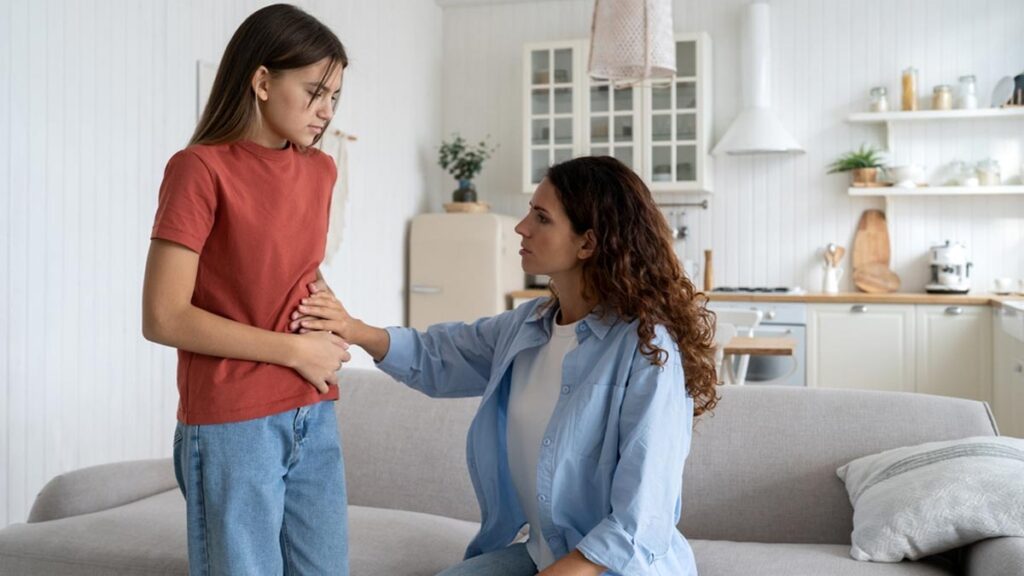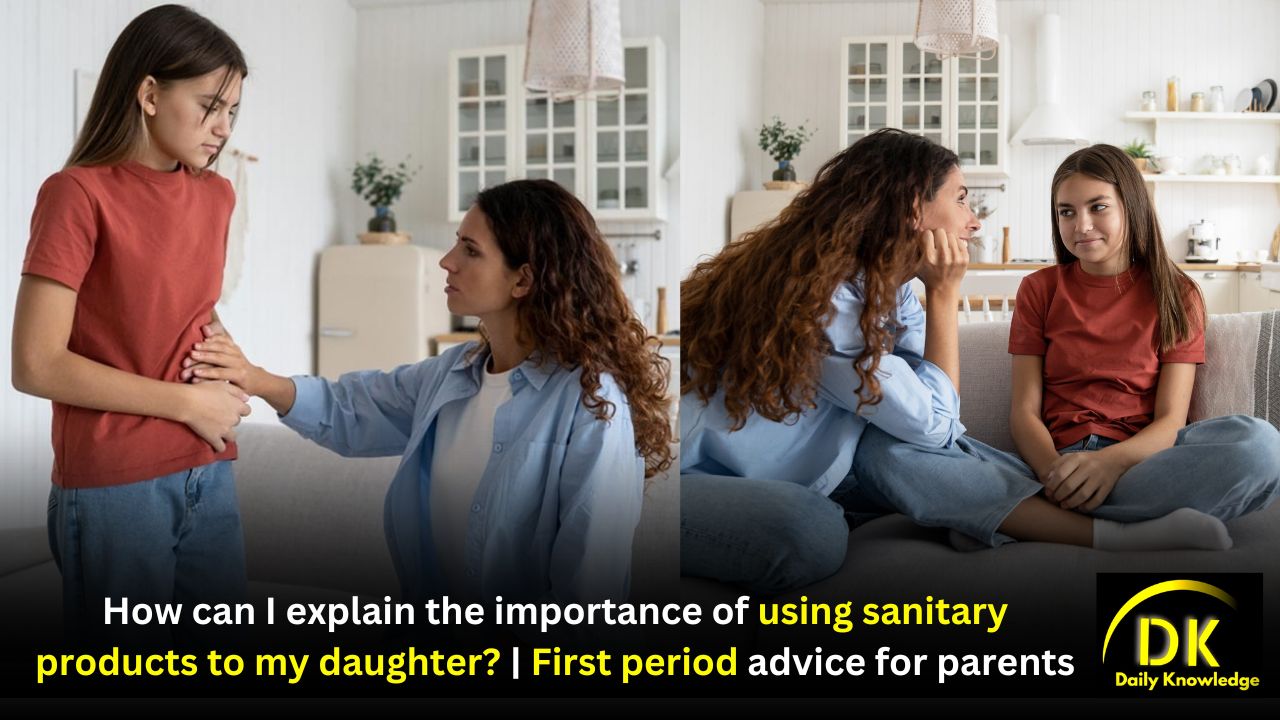Is your 13-year-old using pads without telling you? Get expert advice Learn how to talk to your daughter about periods, hygiene, and the importance of choosing the right sanitary products. 13 year old daughter using pads for her period without my permission. |How can I explain the importance of using sanitary products to my daughter?
When Your Teen Chooses Pads: A Guide for Parents

Discovering your 13-year-old daughter is using pads for her period without your explicit permission might feel like a curveball. However, it’s a common scenario that opens a door to important conversations about her body, choices, and growing independence. Here’s how to navigate this situation with understanding and support.
Why Open Communication Matters?
It’s essential to foster an environment where your daughter feels comfortable discussing her period and related hygiene practices. Approaching the situation with openness helps build trust and encourages her to share her experiences and concerns.
Understanding Her Perspective
Before reacting, try to understand why she used pads without discussing it with you. Perhaps she:
- Values convenience: Pads are readily available and easy to use.
- Seeks privacy: She might feel embarrassed or uncomfortable discussing her period.
- Prefers familiarity: Pads are often the first sanitary product girls use due to their perceived simplicity.
Initiating a Calm Conversation
Choose a calm, private moment to talk. Start by acknowledging her growing independence and the natural changes she’s experiencing. You could say something like: “I noticed you’ve been using pads, and I wanted to check in and see how you’re feeling about your period.”
Providing Information and Education
Use this as an opportunity to educate her about different types of sanitary products, including:
- Pads: Explain how to properly position and change them every 4-6 hours for hygiene and leak prevention.
- Tampons: If she’s interested, discuss how to use them safely, emphasizing the importance of changing them every 6-8 hours and the risks of toxic shock syndrome (TSS).
- Menstrual cups: Introduce them as an eco-friendly option for older teens, but suggest waiting until she’s comfortable with pads or tampons first.
- Period Underwear: Explain that period underwear can be a comfortable option, especially for lighter days or as a backup.
Addressing Concerns and Misconceptions
She may have concerns or misconceptions about using pads or other products. Address these by:
- Sharing reliable resources Offer books, websites, or apps that provide accurate information about menstruation and hygiene.
- Answering questions honestly Create a safe space for her to ask anything without judgment.
- Consulting a professional Consider a visit to a gynecologist for a check-up and to address any medical concerns.
Empowering Her Choices
Ultimately, it’s her body, and she should feel empowered to make informed choices about what feels most comfortable and suitable for her. Support her decision to use pads while ensuring she understands the importance of hygiene and proper usage.
Practical Tips and Support
- Creating a period kit: Work together to create a discreet period kit for her school bag, including pads, spare underwear, and disposal bags.
- Tracking her cycle: Help her track her period using a calendar or app to anticipate her needs and manage supplies.
- Discussing waste management: Explain how to properly dispose of used pads in an environmentally responsible way.
Dealing with Accidents
Accidents happen, especially in the beginning. Teach her how to manage leaks and stains discreetly:
- Keep spare clothes: Encourage her to keep an extra set of clothes at school.
- Rinse with cold water: Show her how to rinse stained clothes with cold water to prevent the stain from setting.
- Use stain removers: Suggest using stain removers like hydrogen peroxide for stubborn stains.
Monitoring for Symptoms
Encourage her to pay attention to any symptoms she experiences before or during her period, such as cramps, headaches, or fatigue. Discuss ways to manage these symptoms, such as:
- Over-the-counter pain relievers: Explain appropriate dosages for pain relief.
- Heat therapy: Suggest using a heating pad or warm bath to ease cramps.
- Rest and hydration: Emphasize the importance of getting enough rest and staying hydrated.
Celebrating Womanhood
Reframe menstruation as a natural and empowering part of being a woman. Share positive stories and experiences to help her embrace this new phase with confidence and pride.
By fostering open communication, providing accurate information, and empowering her choices, you can turn this seemingly unauthorized pad usage into a positive learning experience that strengthens your relationship and supports her journey into womanhood.
How can I explain the importance of using sanitary products to my daughter?
You can explain the importance of using sanitary products to your daughter by emphasizing hygiene, comfort, and overall well-being. Here’s how:
- Hygiene and Health: Explain that using sanitary products helps maintain cleanliness during menstruation, reducing the risk of infections like reproductive and urinary tract infections. Neglecting hygiene can also spread infections, such as hepatitis B and thrush if hands aren’t washed after changing menstrual products.
- Comfort and Confidence: Sanitary napkins, for example, are convenient and help in absorbing blood, providing a feeling of dryness. This allows girls more mobility and participation in activities.
- Types of Products: Discuss different options like pads, tampons, menstrual cups, and period underwear, explaining how each is used and their respective benefits.
Proper Usage:
- Pads: Explain how to position and change them every 4-6 hours.
- Tampons: If she’s interested, discuss how to use them safely, emphasizing changing them every 4–6 hours and the risks of toxic shock syndrome (TSS).
- Menstrual cups: Introduce them as an eco-friendly option for older teens, but suggest waiting until she’s comfortable with pads or tampons first.
- Period Underwear: Explain that period underwear can be a comfortable option, especially for lighter days or as a backup.
- Waste Disposal: Discuss the proper disposal of used sanitary products in an environmentally responsible way.
- Menstrual Health Management (MHM): Explain MHM as using clean menstrual management material to absorb or collect menstrual blood, changing it as often as necessary in privacy, using soap and water for washing the body, and having access to safe disposal facilities.
- Education and Empowerment: Providing knowledge and skills on maintaining menstrual hygiene improves school attendance and opens more options for jobs, promotions, and entrepreneurship.
- Menstrual Kit: Help her create a period kit with sanitary pads, extra underwear, and disposal bags.
By having open and honest conversations, you can ensure she understands how to manage her menstruation with dignity and without discomfort or fear.

